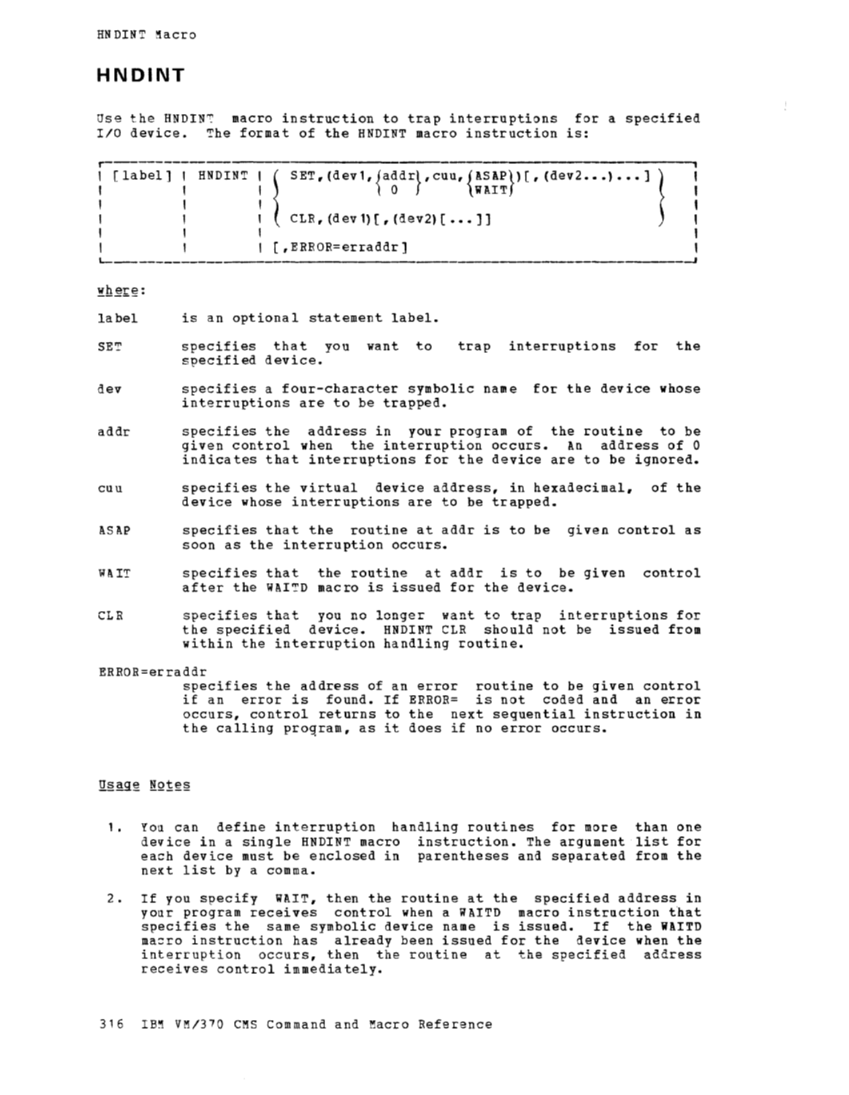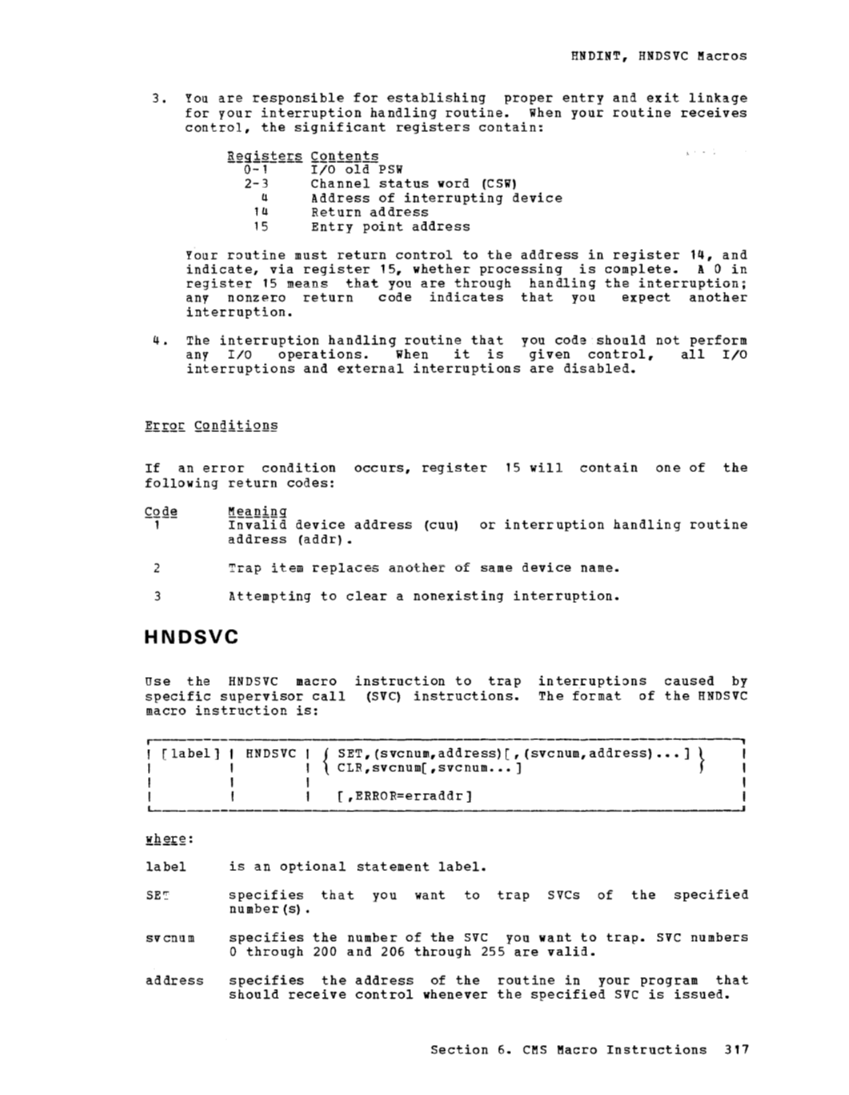HN DINT HNDINT Use the 1/0 device. The format of the HNDINT macro instruction is:
r, (label] , HNDINT ••• } ••• ] t , I t CLR, (d ev 1) ( , (dev2) [ ••• ]] ) I , [ , ERROR=erraddr] L- label
SET
is an optional statement label.
specifies that you want to
specified device.
trap interruptions for the
dev specifies a four-character symbolic name fortne device whose
interruptions are to be trapped.
addr specifies the address in your program of the routine to be
given control when the interruption occurs. An address of0 indicates that interruptions for the device are to be ignored.
cuu specifies the virtual device address, in hexadecimal, of the
device whose interruptions are to be trapped.ASAP specifies that the routine at addr is to be given control as
soon as the interruption occurs.
after theWAITD macro is issued for the device.
CLR specifies that you no longer want to trap interruptions for
the specified device. HNDINTCLR should not be issued from
within the interruption handling routine.ERROR=erraddr specifies the address of an error routine to be given control
if an error is found. IfERROR= is not coded and an error
occurs, control returns to the next sequential instruction in
the calling
1.You can define interruption handling routines for more than one
device in a single HNDINT macro instruction. The argument list for
each device must be enclosed in parentheses and separated from thenext list by a comma.
2. If you specifyWAIT, then the routine at the specified address in
your program receives control when a WAITD macro instruction that
specifies the same symbolic device name is issued. If the WAITDma=ro instruction has already been issued for the device when the
interruption occurs, then the routine at the specified address
receives control immediately.
316VM/370 CMS Command and Macro Reference
r
SET
is an optional statement label.
specifies that you want to
specified device.
trap interruptions for the
dev specifies a four-character symbolic name for
interruptions are to be trapped.
addr specifies the address in your program of the routine to be
given control when the interruption occurs. An address of
cuu specifies the virtual device address, in hexadecimal, of the
device whose interruptions are to be trapped.
soon as the interruption occurs.
after the
CLR specifies that you no longer want to trap interruptions for
the specified device. HNDINT
within the interruption handling routine.
if an error is found. If
occurs, control returns to the next sequential instruction in
the calling
1.
device in a single HNDINT macro instruction. The argument list for
each device must be enclosed in parentheses and separated from the
2. If you specify
your program receives control when a WAITD macro instruction that
specifies the same symbolic device name is issued. If the WAITD
interruption occurs, then the routine at the specified address
receives control immediately.
316






















































































































































































































































































































































































































